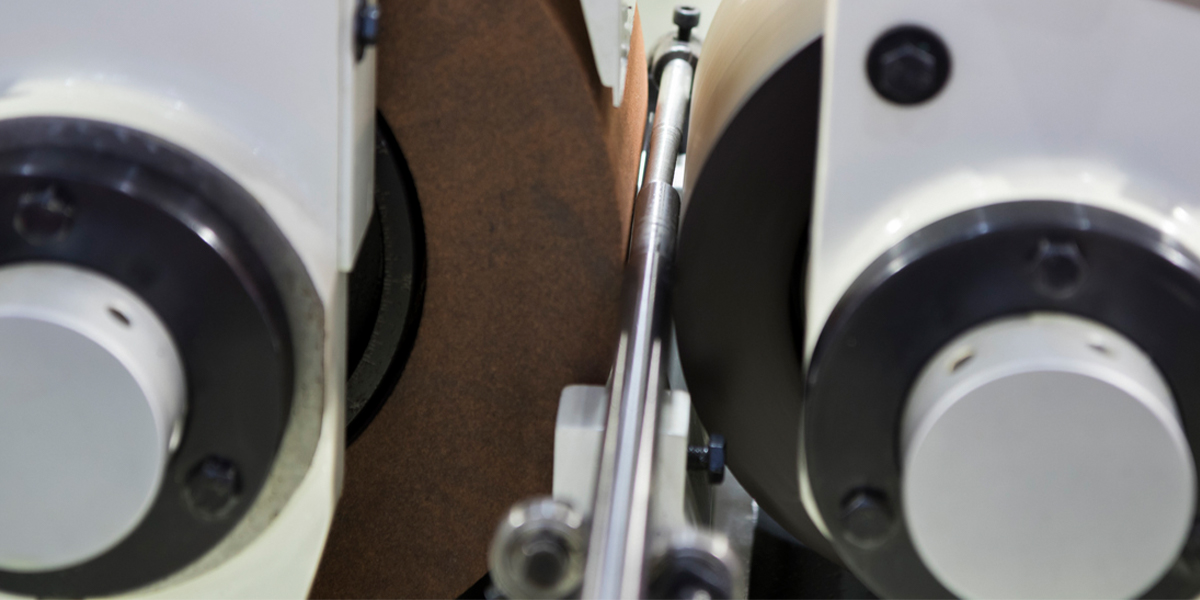Everything You Wanted to Know About Centerless Grinding
In the world of manufacturing, there is a seemingly-endless variety of tools, machines and processes used to get the job done. Centerless grinding is critical to many manufacturing industries where roundness and accuracy are needed, but for people who don't use this machine on a daily basis it comes with a lot of questions. What is centerless grinding and how does it work? In this blog, we will discuss the ins and outs of centerless grinding, the different types centerless grinding and how this type of grinding is used in modern manufacturing.
Click Here for our The State of Aerospace Manufacturing Infographic
What is Centerless Grinding?
Centerless grinding is an outside diameter (OD) grinding process. Compared to other cylindrical grinding processes, centerless grinding does not have a mechanically constrained workpiece. With conventional types of cylindrical grinders, your workpiece is held between centers and rotates against a faster spinning grinding wheel that is operated using an external motor in the work head. Centerless grinding is different.
With centerless grinding, the part supports itself on its outer diameter with the help a work blade or work rest located between a high-speed grinding wheel and slower speed wheel. The workpiece rotates between these wheels in the same direction. The part will turn with the speed-regulating wheel, while the grinding wheel turns faster and removes material from the part.
Types of Centerless Grinding
Similar to other types of grinding, the art of centerless grinding contains many different applications and techniques. The main difference between each of these techniques is how the parts are fed through the machine. There are three main types of centerless grinding techniques: in-feed, through-feed and end-feed.

Centerless grinding holds the workpiece between a grinding wheel and a regulating wheel to achieve better finishes
In-feed centerless grinding, which is also known as plunge grinding is used when the part has a section that is larger than another. With In-feed centerless grinding, you place your part on the work rest and gradually feed the part into the grinding wheel with the regulating wheel. In-feed centerless grinding is often used to generate multiple diameters or create complex parts. This type of grinding is great for constructing small parts with close tolerances.
The most popular form of centerless grinding is through-feed grinding. Known for its productivity, through-feed grinding is performed by passing a part from one side of the machine to the other without stopping. The workpiece is pulled between the grinding wheel and regulating wheel which allows for quicker and more efficient production time. Grinding shops that produce high-volume orders of parts with relatively few features use this technique.
End-feed grinding is the last type of centerless grinding. In end-feed grinding the part is ran through the machine, similar to through-feed, but an end stop will prevent the part from traveling all the way through. End-feed centerless grinding is best used to manufacture tapered parts.
Applications and Uses
Due to its high precision, centerless grinding has been used to manufacture components in a variety of industries. While manufacturing engine and transmission components such as needle rollers, camshafts and injector plungers for the automotive industry is the most common, it doesn't stop there. Centerless grinding applications can be found throughout the energy, medical and aerospace industries as well. From manufacturing parts for airplanes to computers to windmills, centerless grinding has provided ultra-precise parts to the world of manufacturing.
Is Centerless Grinding Right for You?
When it comes to centerless grinding, the machine itself can replace turning processes when parts have fine finish requirements, high length-to-diameter ratios or require close tolerances. Centerless grinding comes with many benefits but many machine shops are unable to utilize this machine due to its niche skillset. Justifying the purchase of a centerless grinder requires an adequate workload and employees who have the expertise to operate the machine.
Centerless grinding is a great solution for manufacturers that require high volume production with rapid rounding and accuracy capabilities. It can be used to create a wide variety of parts quickly and with precision, so if you have a need for this type of work you should consider using an experienced, skilled centerless grinding partner.










